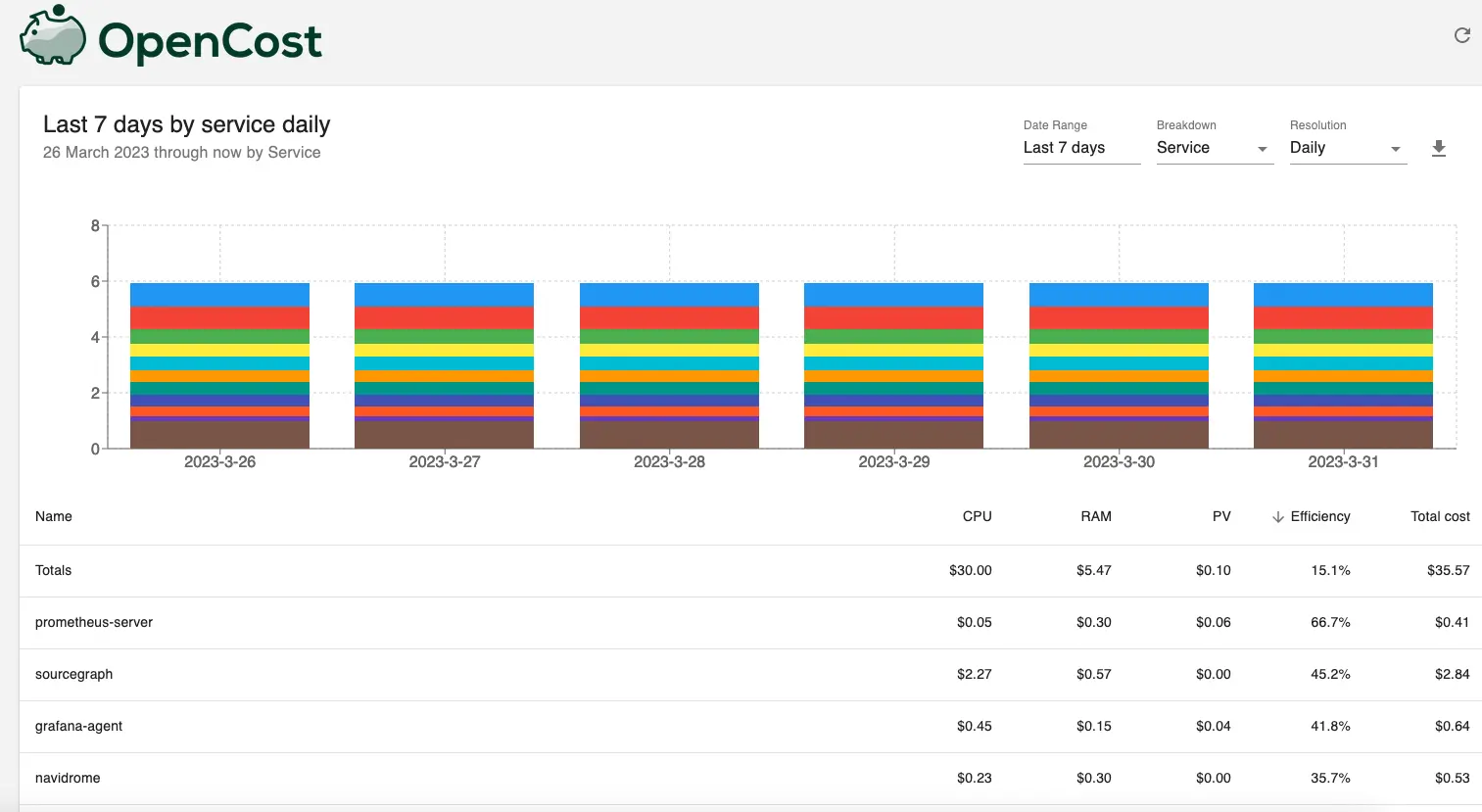Correction 2023-07-02: fix homelab specs and corresponding AWS EC2 instance class (it’s actually 32GB RAM, not 64GB)
Congratulations, you managed to successfully deployed a few services on kubernetes! But this is not the end 👀. Unfortunately money doesn’t grow on trees, and if you can’t justify your infra expenses, finance department won’t be happy.
If you’re using Terraform, you can use Infracost to create a cost report. Pretty nifty. But what about kubernetes? Given cost reporting is a basic feature, kubernetes is no exception.
Enter OpenCost, a vendor-neutral open source project for measuring and allocating infrastructure and container costs in real time. This also means it is vendor-agnostic. Meaning as long as it’s kubernetes, it would work regardless of which cloud it’s on (and it works with on-prem setup as well 😉).
Under the hood, it utilizes [prometheus metrics], in conjunction with [provisioned resources for containers - defined in deployment manifest], to calculate cost based on [cloud pricing per compute unit - you can adjust this later].
You can follow OpenCost install instructions here. Wait for a few days for prometheus to collect usage metrics, and check out OpenCost dashboard. This is what mine looks like:

Notice efficiency column, this tells how well your resources are being utilized. If you see a low number here, consider using function-as-a-service or other cloud compute where pricing is calculated per usage, not active time (something like gcp’s cloud run).
Boring math part 😴
So that’s $35.57 / 6 days, which would be around $5.9 / day. Per year this would cost $5.9 * 52 = $306.8 / year 😱.
My current home server setup is around $880, so that’s around 3 years before it would break even 🤣.
But what if we’re talking about raw compute price? My server is 8 cores, 32GB RAM, 1TB SSD, cheapest compute on AWS with similar specs per year is t3a.2xlarge, which is $3307 / year.
Pricing is hard…